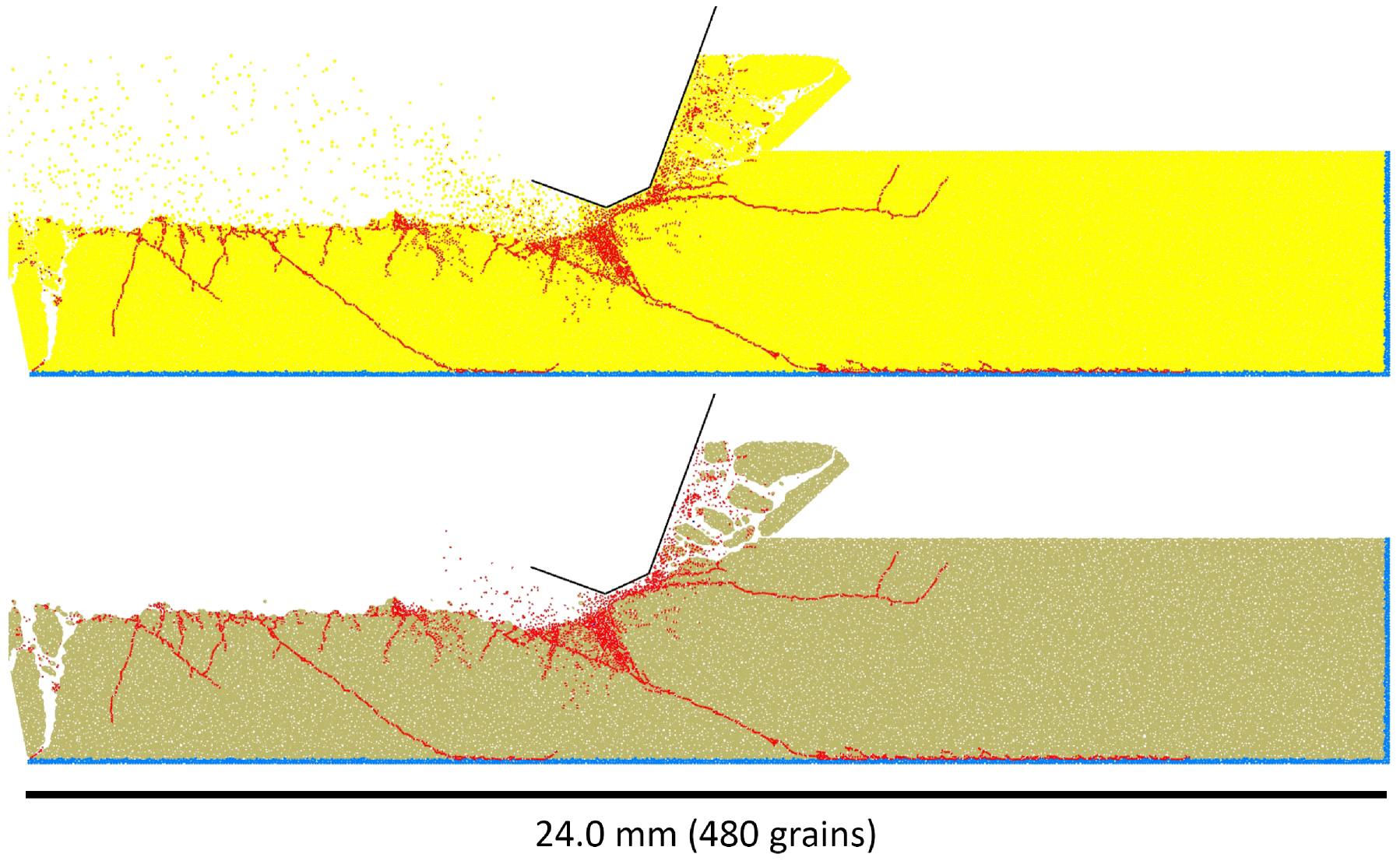Schedule:
| PRESENTATION | SPEAKER |
| Discrete Element Method Modeling of Particle Attrition | Carl Wassgren, Purdue University |
| Bonded-Particle Modeling of Fracture and Flow | David Potyondy, Itasca Consulting Group |
| Approaches for Accurate Modeling of Particle Attrition in DEM Simulations | Alex Potapov, Rocky DEM Inc. |
Discrete Element Method Modeling of Particle Attrition
Carl Wassgren, Purdue University
The discrete element method (DEM) is becoming an increasingly common tool used to model the dynamics of particulate systems, including particle attrition and wear. In this talk I will review several attrition modeling approaches used in DEM. In addition, I will present recent research concerning two issues that have an important influence on making accurate attrition predictions: particle shape and contact forces.
Bonded-Particle Modeling of Fracture and Flow
David Potyondy, Itasca Consulting Group, Inc.
Discrete-element methods allow one to simulate the movement and mechanical interaction of hundreds of thousands of discrete particles. Bonded-particle models (Potyondy, 2015) represent a solid as a bonded collection of discrete particles, and provide a synthetic material whose mechanical behavior ranges from that of a solid material (such as rock, concrete or ceramics) when the bonds are intact to that of a granular material when the bonds have all broken. The macroscopic behavior of such models is an emergent property of the system that arises from a small set of microproperties for the particles, bonds and particle-particle interactions. These models support investigation of the relations between microstructure and material properties under both quasi-static and fully dynamic loading, and can be used to simulate any physical process whose physics can be described by the interaction of discrete particles.
After introducing the basic concepts of a bonded-particle model, examples of how such models are being applied to model rock fracture and material flow are presented. The first example models a rock-cut test (at the mm scale), during which a cylindrical cutter is moved across the rock surface while monitoring forces on the cutter and damage in the rock as shown in Fig. 1. The rock is a sandstone, with the particles and bonds representing grains and cement, respectively. The second example models cave mining (at the 10–100 m scale), during which the undercutting of a rock mass and subsequent draw of the collapsed material fragments the rock mass in an upwardly progressive fashion (Pierce, 2010). The size of rock fragments in the selfpropagating cave decreases as the cave matures, and is attributed to the attrition of fragments in the course of traveling from their origin to the draw point. PFC3D (Particle Flow Code in 3 Dimensions) was used to study both compression- and shearing-induced secondary fragmentation, and the results of these simulations, in combination with in situ data, were used to develop a rapid draw simulator (REBOP, Rapid Emulator Based on PFC) for cave mining to predict material drawdown and ore recovery. The 30-minute talk focuses on the first example.
REFERENCES
Potyondy, D.O. (2015) “The Bonded-Particle Model as a Tool for Rock Mechanics Research and Application: Current Trends and Future Directions,” Geosystem Engineering, 18(1), 1–28.
Pierce, M.E. (2010) A Model for Gravity Flow of Fragmented Rock in Block Caving Mines. Ph.D. Thesis, University of Queensland, Brisbane, Australia.

Fig. 1. Rock-cutting test behavior of a bonded-particle model of a sandstone after 11.2 mm of cutter displacement showing cracks with gap less than 50 microns (in red) as well as grains (top image, in yellow) and cement (bottom image, in tan). Rock damage consists of bond-breakage events, which we denote as cracks, and cracks may link up to form fractures that break the material into fragments.
Approaches for Accurate Modeling of Particle Attrition in DEM Simulations
Alex Potapov, Rocky DEM Inc.
The accurate modeling of particle attrition and breakage in a Discrete Element Model (DEM) are critical in the performance prediction of processes such as high-pressure grinding rolls, cone crusher and mills. These simulations need to consider the reduction in the particle size and subdivision of particles into smaller fragments, which provide significant numerical and programing challenges. The presentation focuses on two approaches for these type of DEM breakage simulations – instantaneous and discrete grain breakage. The instantaneous breakage model treats every particles as a single entity and breaks it into fragments instantaneously based on force or energy breakage criterion. On the other hand, the discrete grain breakage approach uses elementary particles to be “glued” together by a virtual “glue” that can withstand tensile forces up to a threshold limit before breakage occurs. Advantages and disadvantages of both these methods will be presented. In addition, approaches for particles attrition simulations and simulations of boundary attrition caused by particles interactions will also be considered.
